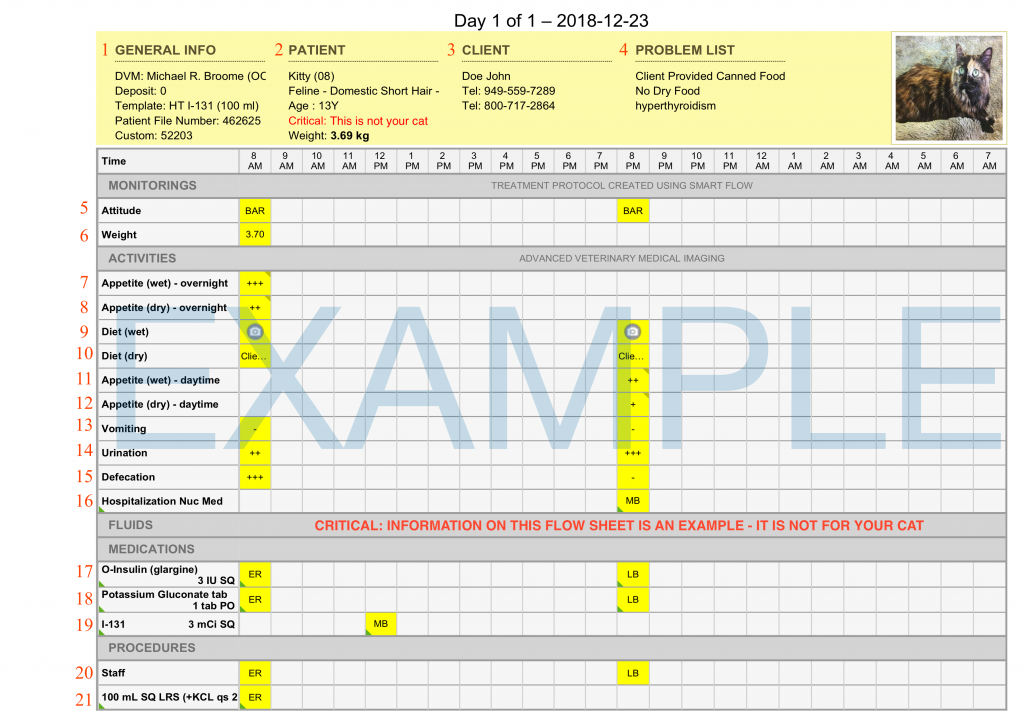
Key: Numerous line items (i.e., #7, 8, and 11-15 in this example) are recorded using a semi objective scale which progresses from none (-), to a little (+), to a moderate amount (++) to a lot (+++).
- General Information: Information mostly used internally.
- Patient Information: Information regarding the pet including any critical information (e.g.; Diabetic) and the admission weight (in kilograms) for this pet.
- Client Information: Client contact information.
- Problem list: Includes reason for hospitalization and general instructions to animal care providers.
- Attitude: A subjective assessment of the pet’s attitude summarized as BAR (Bright, Alert and Responsive), QAR (Quiet, Alert and Responsive), Sedate, Sleeping, etc.
- Weight: Body weight in kilograms
- Appetite (wet) overnight: Semi-objective assessment of the consumption of wet food overnight.
- Appetite (dry) overnight: Semi-objective assessment of the consumption of dry food overnight.
- Diet (wet): Canned food offered to the pet. The camera icon
 indicates that we have taken a picture of the can of food used to feed the cat. (Unfortunately these pictures are not visible to clients.)
indicates that we have taken a picture of the can of food used to feed the cat. (Unfortunately these pictures are not visible to clients.) - Diet (dry): Dry food offered to the pet. Current options include “Client provided” and “Hospital variety”.
- Appetite (wet) daytime: Semi-objective assessment of the consumption of wet food during the day.
- Appetite (dry) daytime: Semi-objective assessment of the consumption of dry food during the day.
- Vomiting: Semi-objective assessment of patient vomiting.
- Urination: Semi-objective assessment of patient urination.
- Defecation: Semi-objective assessment of patient defecation.
- Hospitalization: Indication of pet’s hospitalization overnight.
- Medications: Medications that begin with the characters “O-” are medications that have been prescribed by the referring veterinarian and provided by the owner for administration during the pet’s hospitalization.
- Medications: Medications that have been prescribed by Dr. Broome during the pet’s hospitalization for radioiodine therapy.
- I-131: Records date, time and dose of radioiodine therapy.
- Staff: Initials of the staff member that recorded the information into the flow sheet.
- SQ fluids dose: Hyperthyroid cats undergoing radioiodine therapy are routinely administered subcutaneous fluids during their hospitalization. This line records the details of the fluids type, dose and the date and time of administration.

